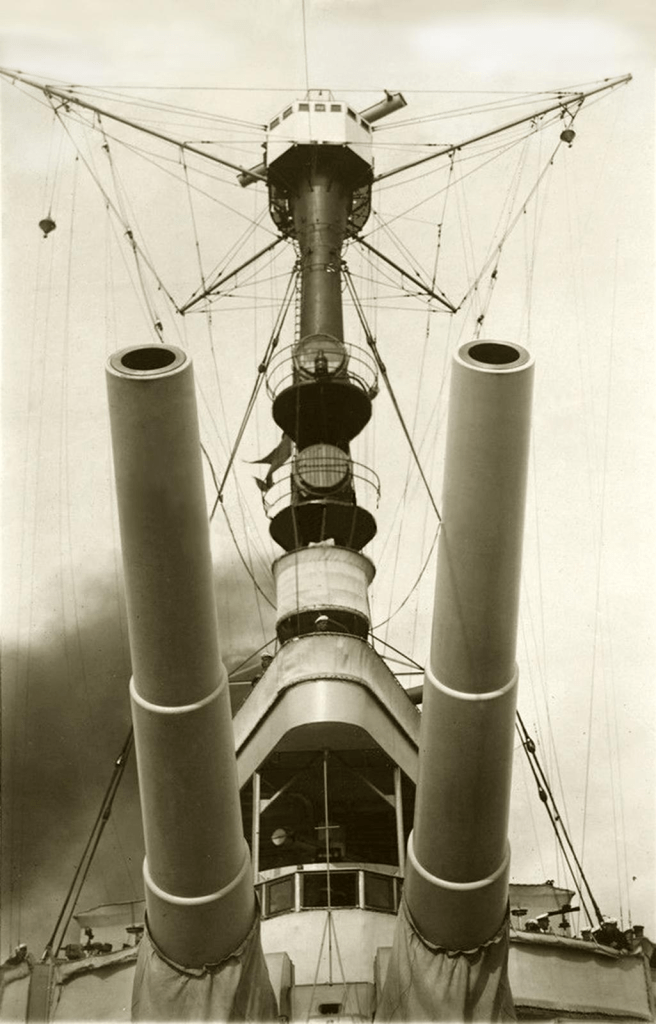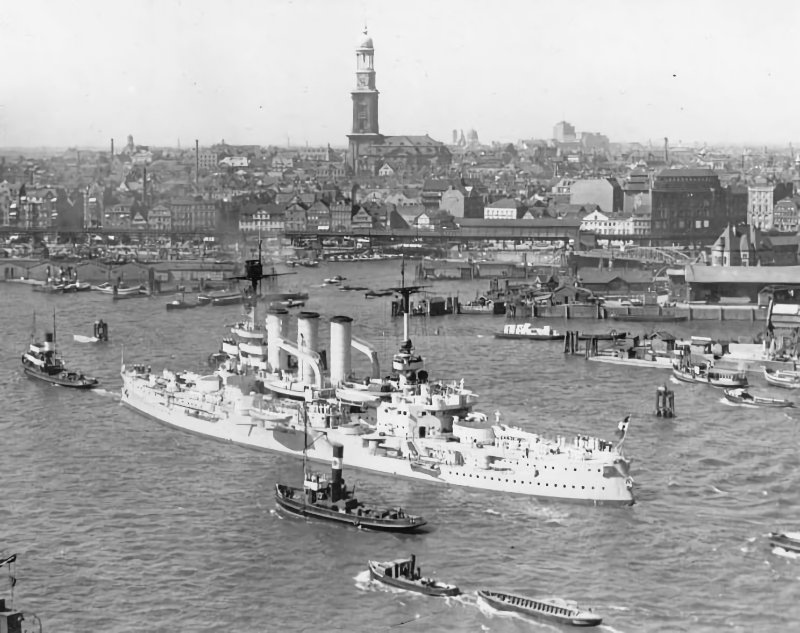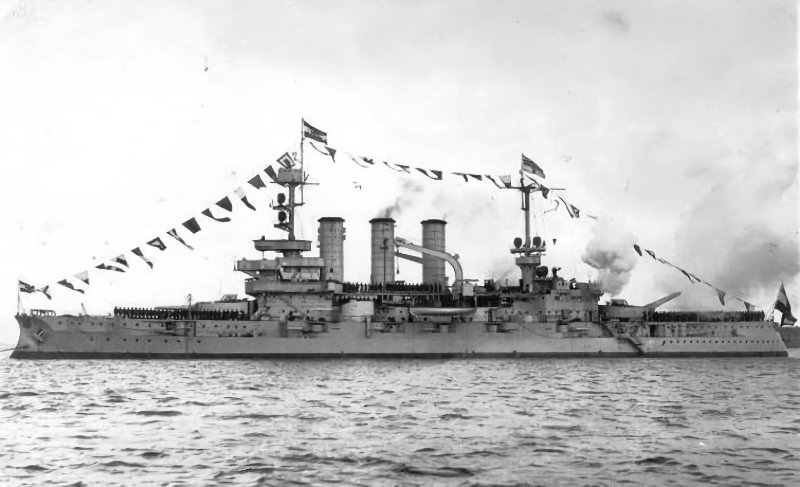German Pre-Dreadnought Battleship SMS Hessen
SMS Hessen was the third ship of the Braunschweig-class battleships (along with her sister ships Braunschweig, Lothringen, Elsass and Preussen) built for the Imperial German Navy in the early 20th century. Named after the Grand Duchy of Hesse, she was laid down at the Germaniawerft shipyard in Kiel in 1902, launched on 18 September 1903, and commissioned on 19 September 1905.
Design and Capabilities
Hessen carried the same main battery as her sisters, with heavy 28 cm guns supported by a strong secondary armament of 17 cm guns. Her engines gave her a speed of 18 knots, typical for pre-dreadnoughts of her generation but inferior to the new dreadnoughts entering service worldwide.
Pre-War Service
After commissioning, Hessen joined the High Seas Fleet and served in regular peacetime manoeuvres and cruises. She was considered one of Germany’s front-line battleships until the commissioning of the new dreadnoughts relegated her to secondary status.
First World War Service and the Battle of Jutland
When the First World War broke out, Hessen was mobilised with the fleet. Although older, the Braunschweig-class ships were still deployed in the North Sea.
Hessen’s most notable action came during the Battle of Jutland (31 May–1 June 1916), the largest naval battle of the war. She was part of the II Battle Squadron, which consisted mainly of pre-dreadnoughts and was placed at the rear of the German line of battle. During the daytime action, she covered the withdrawal of the German battlecruisers.
During the chaotic night actions, Hessen and her squadron were heavily exposed as they attempted to protect the retreat of the High Seas Fleet. The older ships found themselves in extremely dangerous situations, illuminated at close range by British destroyers and cruisers. Hessen fired her guns in the melee (mostly at imagined submarines) but did not score any confirmed hits. After Jutland, the German command decided to withdraw these obsolete ships from active fleet duty.
Later Service
After Jutland, Hessen was reassigned to as a depot ship for I Submarine Flotilla.
Following the war, under the Treaty of Versailles, Germany was allowed to retain eight pre-dreadnoughts for coastal defence. Hessen was among those kept and served with the Reichsmarine during the 1920s.
Conversion and Later Career
In the mid-1930s, Hessen was converted into a radio-controlled target ship for the Kriegsmarine. Her heavy armament was removed, and she was fitted with remote-control equipment, allowing newer warships and aircraft to use her as a gunnery and bombing target.
During the Second World War, she continued in this role. She was captured by Allied forces in 1945 and subsequently handed over to the Soviet Union as war reparations. Renamed Tsel, she remained in service with the Soviet Navy as a target hulk until finally being scrapped in the 1960s.
Specifications (as built):
- Class: Braunschweig-class battleship
- Displacement: 13,200 t (full load)
- Length: 127.7 m
- Beam: 22.2 m
- Draught: 8.1 m
- Propulsion: 3-shaft vertical triple-expansion steam engines, 16 boilers
- Power: 16,000 ihp
- Speed: 18 knots
- Range: approx. 5,200 nmi at 10 knots
- Crew: 35 officers, 708 men
- Armament:
- 4 × 28 cm (11 in) guns (2 × twin turrets)
- 14 × 17 cm (6.7 in) casemate guns
- 18 × 8.8 cm (3.45 in) quick-firing guns
- 6 × 45 cm (17.7 in) torpedo tubes
- Armour:
- Belt: up to 225 mm
- Deck: 40 mm
- Turrets: up to 250 mm
- Conning tower: 250 mm















